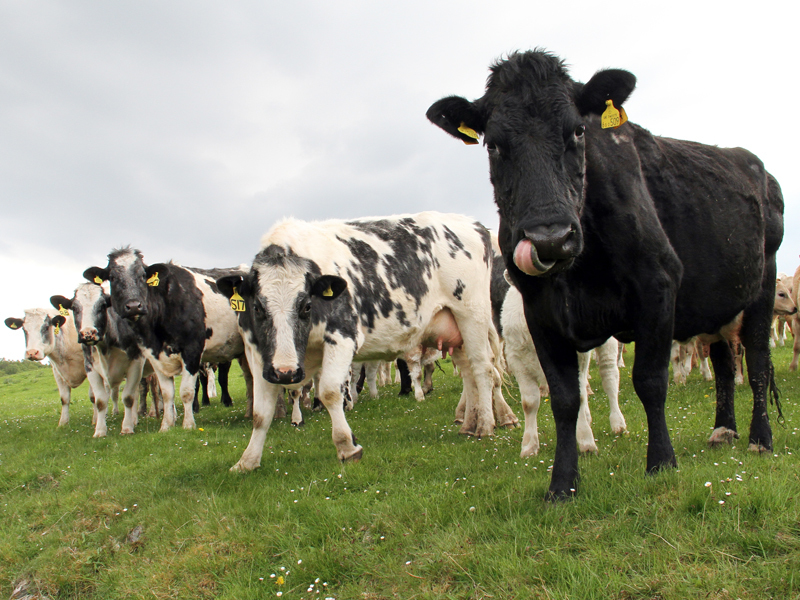Cattle are important in the North East and across Scotland.
It’s the most common enterprise and part of the culture. But for many intensive beef producers, the revamped Common Agricultural Policy will, after the phase-in period, cause significant pain with the annual subsidy cheque falling sharply.
Making changes in a beef system takes time so now’s the point to start thinking. There’s no simple answer and no single solution. Everyone’s route will be different. But there is a way ahead for most cattle businesses.
The starting point is a good understanding of your physical and financial figures.
People who know their vital statistics will be better placed to plan for change than those who don’t. Compare them against the best producers. Look for folk who are doing things differently. You are aiming to re-design your system so it can leave a profit without subsidy.
The major issue for a Scottish suckler herd is the cost of winter. How do you reduce the cost of winter per kilo of beef produced?
There’s a good case for arguing that many cows are too big. The key here is the weight of calf weaned per kg of cow maintained. With a careful choice of genetics, cows weighing little over 500kg can produce finished bulls of 350kg deadweight.
This smaller cow will have a lower maintenance feed requirement, will do less damage to grass at the shoulders of the year, and you can fit more into the same area, whether that is a shed or grazing.
Another critical consideration is how much of the job a cow can do for herself, and for how long.
Cows which are hardy, fertile, have good feet and udders, are milky and easy calving will also leave more profit per calf reared.
It goes without saying that getting on top of health problems like BVD, Johnes, Lepto and fluke has a major impact on calving percentage.
In our climate, indoor finishing on intensive rations is always going to be important, but the more weight we put on at grass – our cheapest feed – the lower our overall cost per kg.
Many trials have shown that rotational grazing could increase output per hectare by 50%. It’s maybe a relief to get cattle outside after a long winter, but then we are challenged by coping with our explosive early summer growth. Keeping young, digestible grass in front of growing stock is critical to getting better liveweight gains.
In most suckler systems the fixed costs are bigger than the variable costs.
Investment in machinery and buildings has often allowed expansion, reduced labour costs and made life easier. But power costs in most farm businesses have rocketed over the last 10 years.
Looking ahead to the new subsidy regime, we will have to think harder about capital expenditure. Simplicity and scale are key.
In my experience the farms with simple systems both in terms of the number of different groups of stock and the feeding regime tend to have lower fixed costs.
And in some locations, we will have to face up to the fact that it simply won’t pay to over-winter a cow if you cannot make a cheap enough winter feed and/or have to haul in a lot of straw. That situation will need more imaginative solutions.
At the same time, there are arable farms which have a shortage of organic matter, a surplus of straw, perhaps even empty sheds.
In all probability they will be in a kinder climate, sometimes with lighter land.
These businesses might have finished cattle or pigs at one time, but no longer.
So could some cows be shifted there over winter, rather than straw and concentrates being carted in the other direction? It’s a radical solution, but it is already working well for some low ground and high ground partnerships.
Interestingly the upland cow keeper in this arrangement can keep more cows as his silage area is now available for grazing.
This might all sound pretty radical, but so may be the change in subsidy payment.
You may disagree with some or all of the above, but the key point is to sit down, do your numbers and look around for ideas.
Planning for subsidy change will be up for discussing at a Planning for Profit event at East Scryne, Carnoustie, DD7 6LL on Tuesday July 22 from 1.15pm. To book a place call Kirsty at Quality Meat Scotland on 0131 4724040 or email info@qmscotland.co.uk
